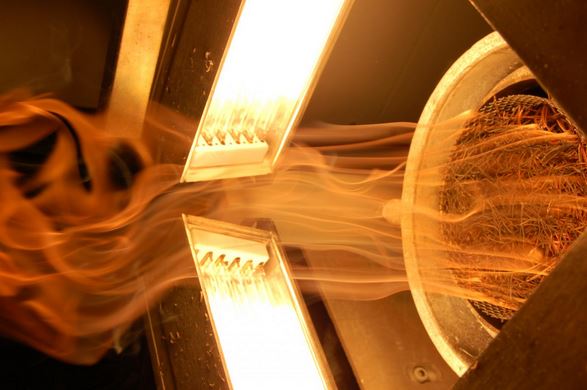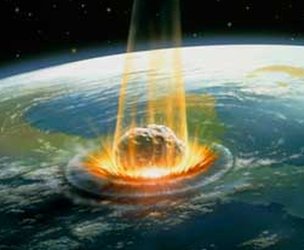The asteroid that scientists believe led to the extinction of dinosaurs did not cause the vast global firestorms that ravaged our planet, researchers from the University of Exeter, the University of Edinburgh and Imperial College London say.
The scientists recreated the massive energy released from an extra-terrestrial collision with Earth that occurred about the time that dinosaurs became extinct.
In their simulation the heat from the explosion was intense but short-lived and could not have ignited live plants across the planet, thus challenging the idea that the collision led to global firestorms.
Many scientists believe the mass extinction of life on Earth that occurred 65 million years ago was due to these global firestorms.
The team found that near the impact site, a crater in Mexico that measures 200 km in width, the heat-pulse would not have lasted even for a minute, which is not enough time to ignite live plant material.
Nevertheless, they did find that the effects of the impact would have been felt a long way away, as far as New Zealand. At that distance the heat would have been of a much lower intensity but longer lasting. The ground would have heated up for about seven minutes, which was long enough to ignite live plant matter.

The fire-propagation apparatus with halogen lamps that deliver thermal radiation. The aim being to recreate the impact induced thermal pulse at the Cretaceous-Palaeogene (K-Pg) boundary. (Credit: University of Exeter. Image: Eurekalert)
Their laboratory experiments showed that while dry plant matter may have ignited, live plants including green pine branches probably did not.
Team member, Dr Claire Belcher from the Earth System Science group in Geography at the University of Exeter said:
“By combining computer simulations of the impact with methods from engineering we have been able to recreate the enormous heat of the impact in the laboratory. This has shown us that the heat was more likely to severely affect ecosystems a long distance away, such that forests in New Zealand would have had more chance of suffering major wildfires than forests in North America that were close to the impact.”
“This flips our understanding of the effects of the impact on its head and means that palaeontologists may need to look for new clues from fossils found a long way from the impact to better understand the mass extinction event.”
Fauna and flora are generally resistant to localized fires. Animals can either hibernate or hide, while plants can re-colonize from other areas. The researchers believe the wildfires caused by the impact were unlikely to be directly capable of leading to extinctions.
However, some animal communities, especially of larger animals, may have found it more difficult to shelter from the heat and may have suffered serious losses, the scientists added. It is doubtful, though, they would have been devastating enough to lead to the extinction of species.

A massive asteroid hit the Earth 65 million years ago and caused the extinction of the dinosaur. It left a huge crater off the coast of Mexico, called Chicxulubt.
Dr. Rory Hadden, who works at the University of Edinburgh said:
“This is a truly exciting piece of inter-disciplinary research. By working together engineers and geoscientists have tackled a complex, long-standing problem in a novel way. This has allowed a step forward in the debate surrounding the end Cretaceous impact and will help Geoscientists interpret the fossil record and evaluate potential future impacts.”
“In addition, the methods we developed in the laboratory for this research have driven new developments in our current understanding of how materials behave in fires particularly at the wildland-urban-interface, meaning that we have been able to answer questions relating to both ancient mass extinctions at the same time as developing understanding of the impact of wildfires in urban areas today.”
Citation: “An experimental assessment of the ignition of forest fuels by the thermal pulse generated by the Cretaceous–Palaeogene impact at Chicxulub,” Claire M. Belcher, Rory M. Hadden, Guillermo Rein, Joanna V. Morgan, Natalia Artemieva, and Tamara Goldin. Journal of the Geological Society, first published on January 22, 2015, doi:10.1144/jgs2014-082.
